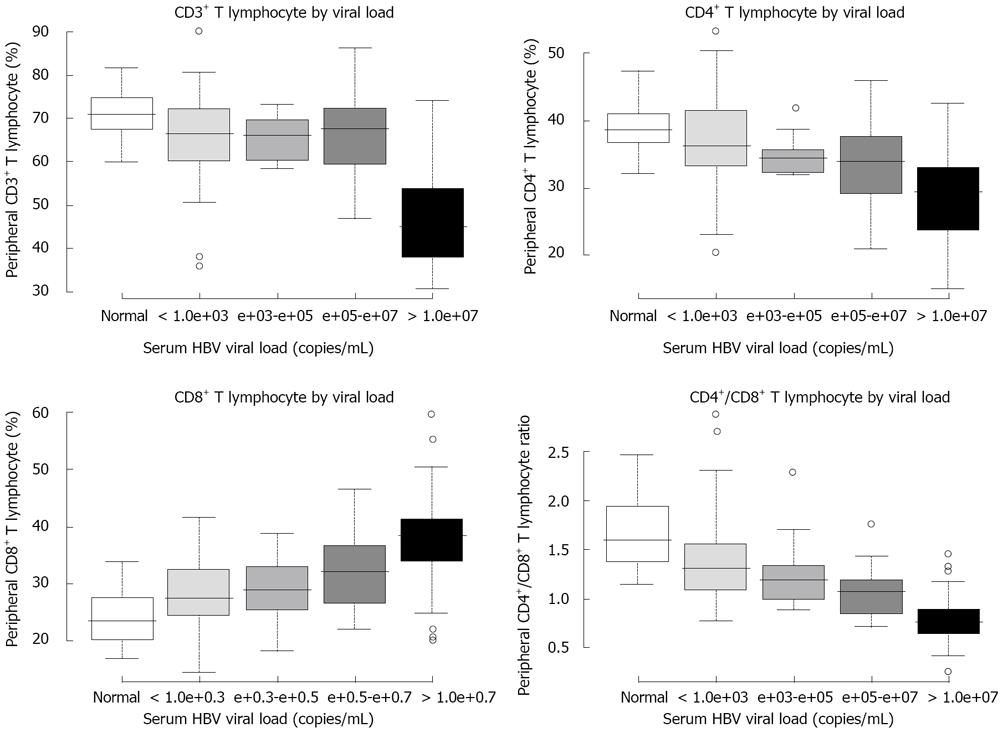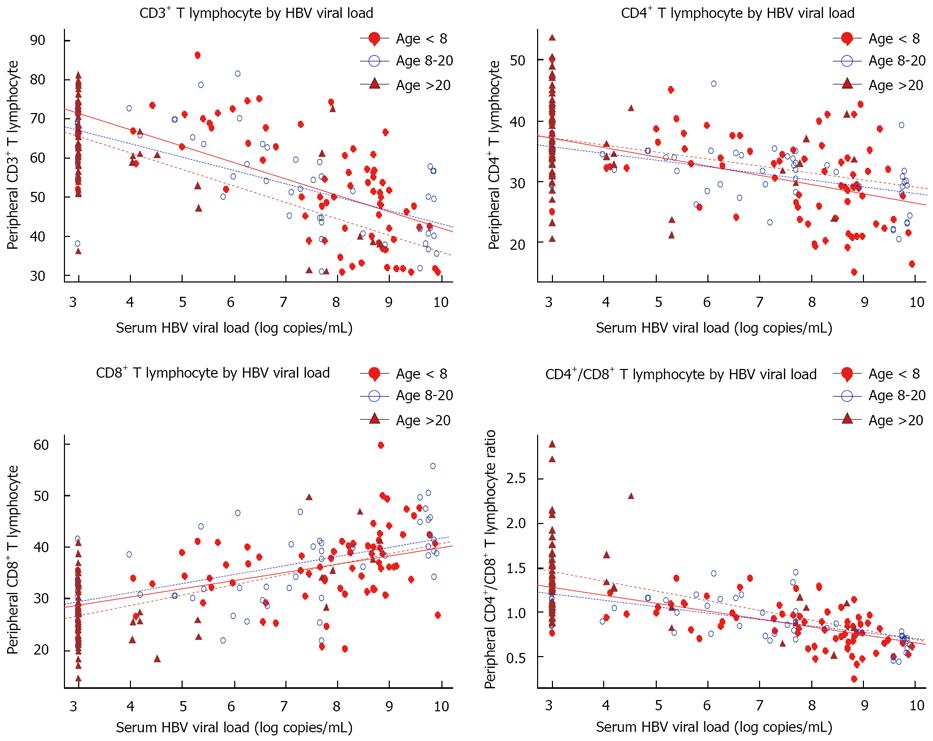Copyright
©2008 The WJG Press and Baishideng.
World J Gastroenterol. Jun 21, 2008; 14(23): 3710-3718
Published online Jun 21, 2008. doi: 10.3748/wjg.14.3710
Published online Jun 21, 2008. doi: 10.3748/wjg.14.3710
Figure 1 Correlation between peripheral T-cell subsets and serum HBV viral load.
The numbers in the boxes refer to correlation coefficients. There is a negative correlation between the CD3+and CD4+ cells and CD4+/CD8+ ratio and serum viral load in CHI individuals with normal LFTs (r = -0.67, -0.54, -0.67; P < 0.0001), and a positive correlation between the levels of CD8+ cells and viral load (r = 0.61, P < 0.0001).
Figure 2 Peripheral T-lymphocyte subpopulations by serum HBV viral load.
Composition of T-cell subpopulations from peripheral blood of patients with various serum HBV viral loads. Results are expressed as percentage of cells for each phenotype. Top of the box represents the 75th percentile, the bottom of the box represents the 25th percentile, and the solid line in the middle of the box represents the median. Whiskers above and below the box indicate the 90th and 10th percentiles, while circles represent outliers. Linear dose-response relationship between the level of T-lymphocyte subpopulations and copies of HBV DNA was highly significant (linear trend test, P value < 0.001). On the figure, the marks “< 1.0e+03”, “e+03-e+05”, “e+05-e+07” and “> 1.0e+07” denote “< 103”, “103-105”, “105-107” and “> 107”, respectively.
Figure 3 Correlation between T-cell subsets and viral load stratified by age at HBV infection.
Three separate regression lines (with different slopes) are drawn for different groups of age at HBV infection. The coefficients of the interaction term “HBV DNA: age-at-HBV-infection” are not statistically significant for each parameter of T lymphocyte subpopulations (all P > 0.05). The P value indicates no significant influence of age at HBV infection on peripheral T-cell subpopulations.
- Citation: You J, Sriplung H, Geater A, Chongsuvivatwong V, Zhuang L, Chen HY, Huang JH, Tang BZ. Hepatitis B virus DNA is more powerful than HBeAg in predicting peripheral T-lymphocyte subpopulations in chronic HBV-infected individuals with normal liver function tests. World J Gastroenterol 2008; 14(23): 3710-3718
- URL: https://www.wjgnet.com/1007-9327/full/v14/i23/3710.htm
- DOI: https://dx.doi.org/10.3748/wjg.14.3710











